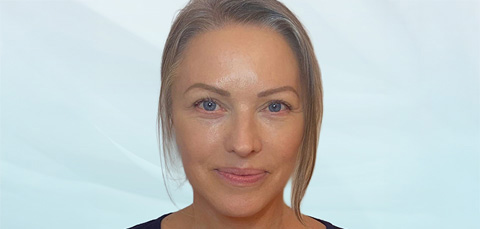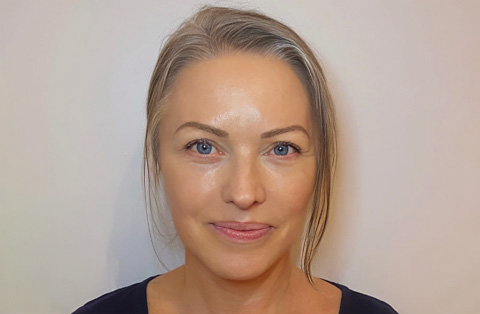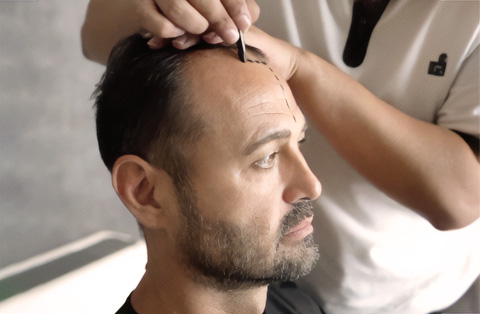Are you considering a facelift also known as rhytidectomy in the UK and curious about the costs involved? You’re not alone. With the rising popularity of facial rejuvenation procedures, more and more people are seeking detailed information about facelift surgery costs in the UK.
This guide is tailored to provide you with all the essential insights into the varied pricing of facelifts, from mini facelifts to full facelifts, across different regions in the UK.
What is a Facelift (Rhytidectomy)?
A facelift is a surgical procedure. It is also known as a rhytidectomy. This procedure is used to reduce visible signs of aging in the face and neck. It can significantly enhance one’s appearance by tightening sagging skin, smoothing deep folds, and restoring the natural contours of the face.
Get more information about facelift surgery procedure in Turkey.
What Does a Facelift Cost Entail?
Embarking on the journey of a facelift procedure isn’t just about enhancing your appearance; it’s also an investment in yourself. However, understanding what this investment entails is crucial for making an informed decision.
From the factors that influence the overall price to a breakdown of different facelift types and their respective costs, we aim to provide a clear picture of what to expect financially.
Additionally, we’ll explore the additional expenses that might come along with this life-changing procedure and help you determine whether a facelift is worth the cost for you.
Understanding the Cost Components
When considering a facelift in the UK, it’s important to be aware of the various cost components that contribute to the total expense. Here’s a breakdown of the typical cost components involved in a facelift:
- Surgeon’s Fee: This is often the most significant part of the cost, reflecting the surgeon’s expertise, experience, and reputation.
- Facility Charges: Costs for using the hospital or clinic’s surgical facilities and equipment.
- Anaesthesia Fees: The cost for the anesthesia used during the procedure, including the anesthesiologist’s fees.
- Pre Operative Tests: Any medical tests required before the surgery to ensure your suitability for the procedure.
- Post-Operative Care: Includes follow-up appointments, medications, and any necessary aftercare for recovery.
- Consultation Fees: Some clinics charge for the initial consultation with the surgeon.
- Additional Treatment Costs: If other procedures, such as neck lift or eyelid surgery, are combined with the facelift.
- Recovery Expenses: Includes any special garments, creams, or other items needed during the recovery period.
- Potential Revision Surgery Costs: In some cases, additional corrective surgeries may be required, incurring extra costs.
- Travel and Accommodation Expenses: For patients traveling from afar, these are additional costs to consider.
Understanding these components is key to getting a comprehensive view of the financial commitment involved in a facelift.
Factors Influencing the Cost
Several factors can significantly influence the cost of a facelift. The complexity and type of facelift procedure – be it a mini, lower, or full facelift – play a pivotal role in determining the price.
The geographical location of the clinic and the surgeon’s level of expertise can also lead to variances in cost. Advanced technology and surgical techniques may increase the price but can also offer better results and faster recovery times.
Comparing Different Facelift Types and Their Costs
Facelifts vary in type and complexity, which is reflected in their costs. A mini facelift, targeting early signs of aging in the lower face, is generally less expensive than a full facelift that addresses more extensive signs of aging across the entire face.
Lower facelifts, focusing on the jawline and neck, fall somewhere in the middle in terms of cost. Understanding the differences between these procedures helps in making an informed decision based on your specific needs and budget.
Additional Expenses Involve in a Facelift
When considering a facelift, it’s essential to account for additional expenses that may not be included in the initial quote. These can include pre surgery consultations, post operative care such as medications and follow-up visits, and potentially the cost of any corrective procedures if necessary.
Ensuring you have a clear understanding of all potential costs upfront can help prevent unexpected expenses down the line.
Is a Facelift Worth the Cost?
The decision to undergo a facelift is personal and involves weighing the costs against the potential benefits. A successful facelift can provide significant improvements in appearance and self confidence, often deemed invaluable by many who undergo the procedure.
However, it’s crucial to have realistic expectations and to consider the long-term financial commitment involved. Consulting with a qualified surgeon can provide a clearer understanding of what results to expect and whether a facelift is a worthwhile investment for you.
Types of Facelift Surgeries and Their Costs
The world of facelift surgeries is diverse, offering a range of procedures tailored to different needs and goals. Each type of facelift, whether it’s a traditional, mini, deep plane, Extended High SMAS or lower facelift, comes with its own techniques and cost implications. In this section, we’ll guide you through the various facelift options available and discuss the typical costs associated with each, helping you make an informed decision about the best choice for your facial rejuvenation journey.
Here’s a table comparing the average prices of different facelift techniques between the UK and Turkey:
Average UK Price vs. Turkey Price of Different Facelift Techniques Chart.
| Facelift Technique | Average UK Price | Average Turkey Price |
| Mini Facelift | £6,000 – £10,000 | £2,000 – £4,000 |
| Traditional Facelift | £9,000 – £15,000 | £3,000 – £5,000 |
| Deep Plane Facelift | £12,900 – £17,900 | £4,000 – £7,000 |
| Extended High SMAS Facelift | £14,900 – £24,900 | £5,000 – £8,000 |
Comparing Traditional Facelift Costs
A traditional facelift, often referred to as a full facelift, is typically the most comprehensive and hence the most expensive. It addresses aging signs across the entire face. In the UK, the cost for a traditional facelift can range from £9,000 to £15,000 or more, depending on the clinic and surgeon’s expertise.
This type of facelift provides long-lasting results and can dramatically rejuvenate the overall appearance.
Understanding the Expenses for Mini Facelift Procedures
Mini facelifts target the lower part of the face and are less invasive than full facelifts. They are ideal for those showing early signs of aging. The cost of a mini facelift in the UK generally ranges between £6,000 and £10,000.
The lower price point reflects the reduced complexity and shorter recovery time associated with this procedure.
The Cost Variations for Lower Facelift Surgeries
Lower facelifts focus specifically on the jawline and neck area, addressing sagging skin and jowls. The cost for a lower facelift typically falls between £6,000 and £7,000, varying based on the extent of the surgery and the surgeon’s qualifications.
It’s a popular choice for those looking to refine their lower facial profile.
Full Facelift Cost Considerations
The full facelift is a comprehensive procedure that targets all areas of the face, providing an overall lift. It’s more extensive than a mini or lower facelift and thus, the cost is higher, often ranging from £10,000 to £15,000.
This cost accounts for the extensive work required, including tightening of the skin and underlying muscles across the face.
Cost Differences Between Face and Neck Lift Procedures
Combining face and neck lift procedures often result in a more harmonious and youthful appearance. The combined procedure can range from £10,000 to £20,000, depending on the complexity and the surgeon’s expertise.
This option is ideal for those seeking comprehensive rejuvenation, as it addresses aging signs in both the face and neck areas.
Factors Affecting the Cost of a Facelift
When considering a facelift, it’s important to understand that various factors can influence the overall cost of the procedure. From the surgeon’s expertise to regional cost variances, several elements play a role in determining how much you’ll pay for this transformative surgery.
Let’s explore these factors in more detail:
Impact of Surgeon’s Expertise on Cost
The expertise and reputation of your surgeon are significant cost drivers. Highly experienced surgeons with a track record of successful outcomes often charge more for their services. This higher cost reflects their expertise, skills, and the demand for their services.
Regional Cost Variances in the UK
Facelift costs can vary significantly across different regions in the UK. Typically, urban areas with higher living costs, like London, may have higher pricing for cosmetic surgeries compared to other regions. This variation is often due to the operational costs and the standard of living in these areas.
Evaluating Anesthesia related Costs
The type of anesthesia used, and the fees of the anesthesiologist contribute to the overall cost. General anesthesia, which is more complex and requires a specialized anesthesiologist, can be more expensive than local anesthesia.
Technology and Treatment Modalities Influencing Pricing
Advancements in technology and the use of cutting-edge treatment modalities can also impact the cost. Innovative techniques may offer better results and faster recovery but might come at a higher price due to the specialized equipment and training required.
Considerations for Cosmetic Surgery Costs
Finally, the overall cost of cosmetic surgery includes not just the surgery itself but also pre- and post-operative care, consultations, and any additional treatments that may be necessary. It’s important to consider all these elements when budgeting for a facelift to avoid unexpected expenses.
Conclusion
In conclusion, navigating the landscape of facelift costs in the UK reveals a spectrum of options, each tailored to different aesthetic goals and budgets. From the more affordable mini facelifts to the comprehensive transformation offered by traditional and advanced techniques like deep plane or extended high SMAS facelifts, the choice ultimately depends on individual needs and desired outcomes.
The cost is influenced by a variety of factors including the surgeon’s expertise, geographical location, type of procedure, and the use of advanced technology. A facelift, regardless of its type, is not just a financial investment but also an investment in oneself, promising long-lasting effects on personal well-being and satisfaction.
As with any medical procedure, thorough research and consultations with qualified professionals are essential. Prospective patients should consider all aspects of the surgery, including the associated risks and the recovery process, to ensure the best possible outcome.
Remember, the goal of a facelift is not just to look younger, but to feel more confident and aligned with your sense of self.
Frequently Asked Questions
What is one stitch facelift?
A one-stitch facelift is a minimally invasive procedure designed to lift and rejuvenate the face with minimal downtime. It involves a single stitch, or a very few stitches, typically made through a small incision. This technique targets mild sagging and early signs of aging around the cheeks and jawline.
Ideal for those seeking subtle improvements, it offers a quick recovery and natural looking results, making it a popular choice for individuals not requiring extensive facial correction.
What Is One Stitch Facelift Cost In UK?
The cost of a one-stitch facelift in the UK typically ranges from approximately £3,000 to £3,500. However, prices can vary depending on the clinic, the surgeon’s expertise, and the specific requirements of the patient. It’s always advisable to consult with a qualified surgeon for a more accurate estimate based on your individual needs.
What Is the Cheapest Country to Get a Facelift?
When considering a facelift in another country based on cost, it’s crucial to prioritize the quality of healthcare services, the experience of the doctors, and the standard of medical facilities. While it may be tempting to choose a destination based solely on lower prices, the expertise of the surgeon and the safety protocols of the facility are far more important for ensuring a successful outcome and your overall well-being.
Countries like Turkey have become popular for medical tourism, not just because of competitive pricing, but also due to their experienced doctors, advanced medical facilities, and stringent healthcare safety laws. These factors collectively ensure a high standard of care, which is essential for any surgical procedure, especially cosmetic surgeries like facelifts.
Always research thoroughly and consider factors like the surgeon’s qualifications, the facility’s accreditation, and post surgery care. Remember, choosing a country for a facelift should be a decision based on quality and safety, not cost alone.
Is Turkey Good for Face Lift?
Turkey is recognized as a significant destination for medical tourism, especially for cosmetic procedures like facelifts. Several factors contribute to its reputation:
- Experienced Surgeons: Turkey is home to many highly qualified and experienced plastic surgeons who often have international training and certifications.
- Advanced Facilities: The country boasts state-of-the-art medical facilities that adhere to international standards, ensuring high-quality care and advanced surgical techniques.
- Affordability: Despite the high standard of care, the cost of cosmetic surgery in Turkey can be more affordable compared to many Western countries.
- Healthcare Safety Laws: Turkey’s healthcare system is regulated by strict safety laws, which helps in maintaining high standards of medical practice.
- Post Surgery Recovery: Many patients appreciate the opportunity to recuperate in a pleasant environment, with Turkey offering both excellent medical care and attractive tourism options.
However, as with any medical procedure abroad, it’s important to conduct thorough research, check the credentials and track record of the clinic and the surgeon, and understand the post-operative care and support system. Patient testimonials and reviews can also provide valuable insights into their experiences.
Why Is Turkish Surgery So Cheap?
The lower cost of surgery in Turkey, compared to many Western countries, can be attributed to several factors:
- Economic Factors: The cost of living and operational expenses in Turkey are generally lower. This translates to lower overall costs for medical procedures without compromising the quality of care.
- Currency Exchange Rates: Favorable exchange rates can make medical procedures in Turkey more affordable for international patients.
- Competitive Medical Market: The growing popularity of medical tourism in Turkey has led to a competitive market, with many facilities offering high-quality services at competitive prices to attract international patients.
- Government Support: The Turkish government supports and promotes medical tourism, which may include subsidies or incentives for healthcare facilities.
It’s important to note that the lower cost does not necessarily reflect lower quality. Turkish medical facilities are known for their advanced technology and highly qualified healthcare professionals. However, patients should still conduct thorough research and choose accredited facilities and experienced surgeons.






